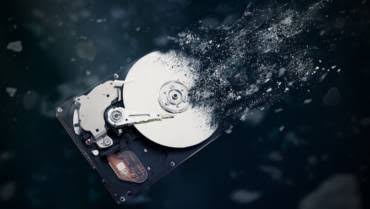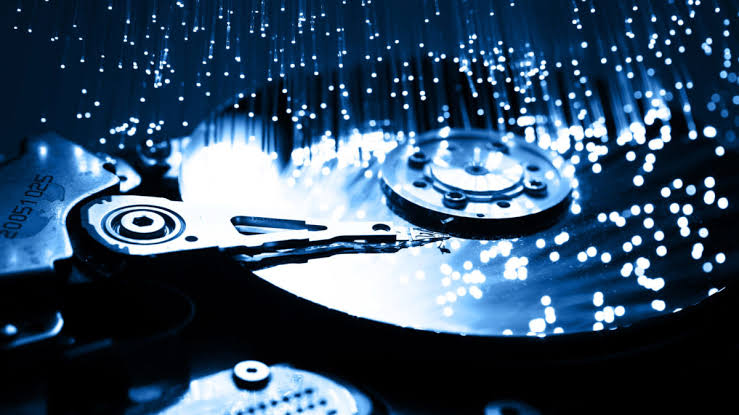The Benefits of Degaussing Hard Drives
Storage systems such as hard drives have stood the test of time since the late 1900s. Years ago, engineers in a lab at IBM designed the first-ever hard drive. It is evident that technology is constantly evolving. New models of hard drives with greater data capacity are introduced at an affordable price annually.
Individuals and organizations are constantly upgrading hard drives. Consequently, there are more disposals for media storage devices in the long run. Many people do not degauss their storage devices, unaware of the consequences. Degaussing hard drives should be a must-do; they failed to comprehend what it is all about.
Hard drives cannot be disposed of by dumping them in a landfill or incinerated, but they can be smashed into bits instead. It’s better not to use the methods above if you intend to throw away some of them now. The only thing you will accomplish is wasting your time, and worse, you will expose your information. Hard drive shredding effectively destroys a hard drive’s data, so it is important to understand how it works. Discover all of the answers by reading on.

Degaussing Hard Drive: Its Definition
When hard drives are degaussed, the magnetic field in the storage media is reduced or eliminated until all information contained within them is unusable. This method will help you prevent privacy risks and digital threats with your hard drive data. Tech companies destroy data using degaussers.
There are different types of degaussers corresponding to different types of data storage. Using a degausser properly can ensure that hard drive contents are disposed of safely. Thus, it is vital to use professionals whenever possible.
You can protect your data and the environment by knowing what is degaussing the hard drive. When you degauss hard drives, you are also making a small contribution to reducing global e-waste. Even though most of its remaining components are still available for recycling, it is important to note that the emphasis is on recycling. Because you shouldn’t be misled about hard drives being reused again after degaussing. Hard drives that have been degaussed cannot be repurposed. Nonetheless, the rest of the components, such as metals and magnetic tapes, can be recycled. Certain companies will recycle your degaussed/damaged drives.
You may be able to ensure your data privacy or reduce the overall amount of electronic waste if you are aware of what degaussing a hard drive is. In addition, you can still sell the reusable parts of a hard drive to recycling companies after it has been degaussed. Degaussing hard drives is a win-win for you and the hard drive manufacturer!
Standard Hard Drive Formats
Media storage, such as hard drives, is known for its reliability and speed. They are modified and upgraded to keep up with the latest technologies available as time passes. They all come with their format. Nowadays, there are four main technological formats:
1. Parallel Advanced Technology Attachment (PATA)
The PATA protocol uses similar signaling technology to transport multiple bits at once. Data can be transferred at 133 MB/s using PATA drives. While hard drives of this type have been around since the 1980s, demand is declining. Since PATA drives are almost considered outdated nowadays, you rarely see them in computer stores anymore. Consequently, you can increasingly find these drives in degaussing fields. You should consider researching what is degaussing a hard drive if you still have a hard drive of this kind, as it will be useful later on.
2. Serial ATA (SATA)
SATA drives are still commonly used today, unlike PATA drives. The SATA drive provides a greater amount of storage, yet it is sold at an affordable price, making it a better choice for budget-conscious consumers. Although it has many advantages, it operates slower than most other hard drives due to its favorable features. As a result, SATA drives rotate at various speeds, reaching 15000 revolutions per minute (RPM) at maximum speed. However, keep in mind that a drive with high RPM is more likely to fail mechanically. If your hard drive failed, look into the cause of the degaussing.
3. Small Computer System Interface (SCSI)
It is still in use, but its demand started to fall around 2005 due to the availability of newer drives launched in the market. After finding them, SCSI drives were initially released in the 1970s and initially named Shugart Associates System Interface, but now, they are more commonly known and pronounced as “scuzzy.” Since then, a growing number of SCSI-drive owners have discarded the drives. As they learned about what is hard drive shredding, they realized how important it is to keep their information safe.
4. Solid State Drives (SSD)
SSDs are the only type of hard drive in this list that doesn’t store data magnetically. Information is instead stored via a semiconductor chip. Like Random Access Memory (RAM) on motherboards, SSDs work using flash memory. Due to its three-fold price premium, it is an expensive drive. Despite this, they remain a popular type of hard drive nationwide.
Degaussing Hard Drives: Factors To Consider
There are many factors to consider during hard drive degaussing, meaning that a particular factor can have a significant impact on the rest. Getting an effective degaussing process will depend greatly on considering the final factors. Following are a few of the most important factors to consider before degaussing:
1. Hard Drive Type
Hard drives come in various types, each with its special characteristics. The first type of storage can hold an enormous amount of data, while the second is limited in storage space. Degaussing will take a certain amount of time, depending on the data stored in the drive. Knowing how much space your drive has is vital. PATA and SATA drives are two types of magnetic drives that are excellent for degaussing. Knowing what model you intend to destroy is crucial when it comes to degaussing. Using the right degausser, budgeting for the process, and even the pace of the process will depend on the hard drive.
2. Degausser Compatibility
Degaussers are a leading technology that enables tech companies to destroy data safely. It should be noted that not all degaussers are equally suited for disposing of media storage. The magnetic field strength is one of the most important factors to think about when making a choice. Some models are designed to work with simple magnetic data storage media, while others are designed for heavier loads to store larger data volumes.
3. Allotted Budget
Degaussing hard drives is an expensive process, so you need to have an idea of how much you are going to spend before you begin to research further. Affordable degaussers include degaussing wands. Most of them will set you back around 500 USD, so they are portable, convenient, and reasonably priced. They have less impressive capabilities than degaussing machines. Despite being pricier, degaussing machines are far more durable and functional in the long run. It would be best to consult with a degaussing expert and obtain a quotation before purchasing or renting a degaussing wand or device.
4. Effectiveness and speed desired
Also, think about how fast and efficient you want the data destruction to be. Some degaussers work faster and others that work more slowly. The T-1.5 HDD and Proton T-4 HDD Machines can automatically perform a hard drive destruction cycle that is fast and accurate within less than a minute. It is proven effective and won’t take much time. Degaussers must meet both your needs and conditions, so it is vital to choose the right type.



